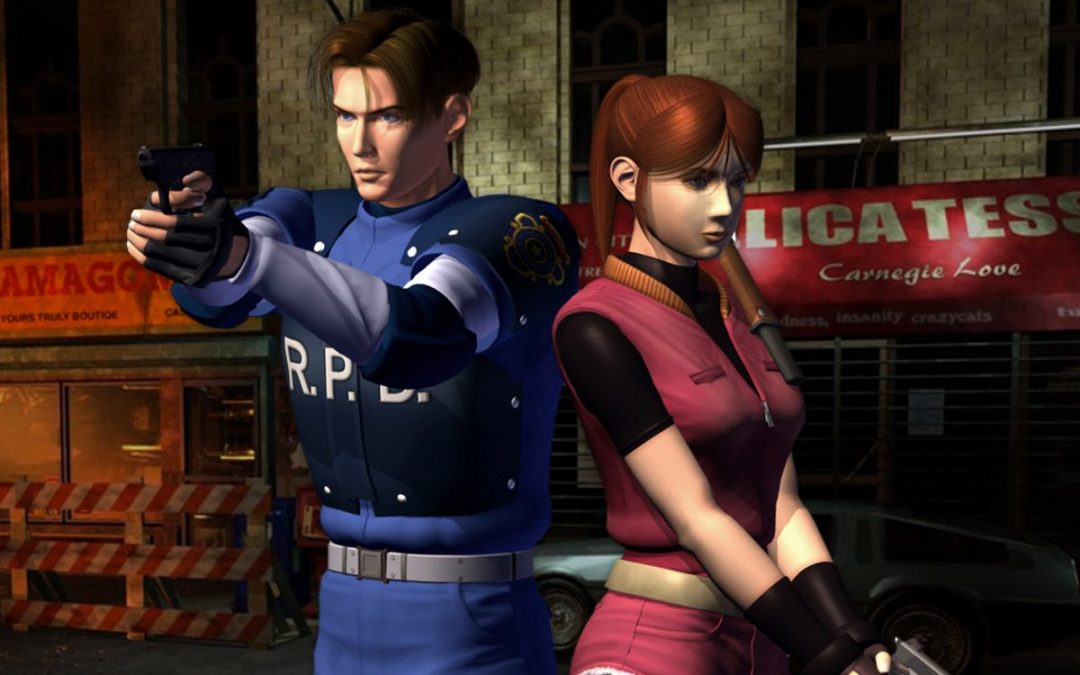We’ve all suffered through sequels made by people who clearly didn’t care, but the truth is that there are few jobs in entertainment more thankless and daunting than trying to deliver a sequel that actually manages to meet, and even exceed, expectations.
Resident Evil 2’s task was especially daunting: it had to build upon a game that changed everything. The original Resident Evil wasn’t the first horror game, but it was the first that popularised the survival horror genre. It not only proved that survival horror was capable of making money, but that these games could be as terrifying (if not more terrifying) as the most effective horror films. You can draw a line on Resident Evil’s 1996 release date and group together every horror game that came before and has come after.
Imagine making a sequel to a game like that, and trying to live up to the expectations of fans of the original as well as studio overlords who wanted another blockbuster. The path of least resistance would have almost certainly been to deliver “more of the first game.”
Perhaps that’s why Resident Evil 2 began life as a game intended to defy the expectations of those who wanted more of the first game. The original build of Resident Evil 2 featured concepts such as dynamic music, character customisation, many more zombies on-screen, branching narrative paths that could lead to character deaths, and other fascinating ideas. It also featured dull, industrial environments, scaled-down visuals, and was a story that was reportedly intended to end the Resident Evil series just as it was getting started.
Had Resident Evil 2’s original build actually made it onto store shelves, we don’t know what the reaction would have been. However, it’s easy to imagine that this sequel would have been divisive. There would have been those who respected its attempts to do something different, but there would have also been many fans who felt the game had tried too hard to subvert expectations. Fortunately, two decisions were made that would take the game in a different direction.
The first decision was made by Shinji Mikami, who took on the role of producer on Resident Evil 2 after directing and essentially creating the original Resident Evil. The brilliant Hideki Kamiya, who had worked as a planner on the first game, was the director of Resident Evil 2.
Mikami reportedly decided to take a greater hand in the sequel’s development in the months leading up to its planned release. In the process, he ultimately decided that the first build of the game (now known as Resident Evil 1.5) was simply “dull and boring.” Kamiya was even less kind to that build of the game and would later describe it as a “piece of shit.” The pair decided to scrap almost the entire project even though it was, by all accounts, almost finished and ready to be shipped.
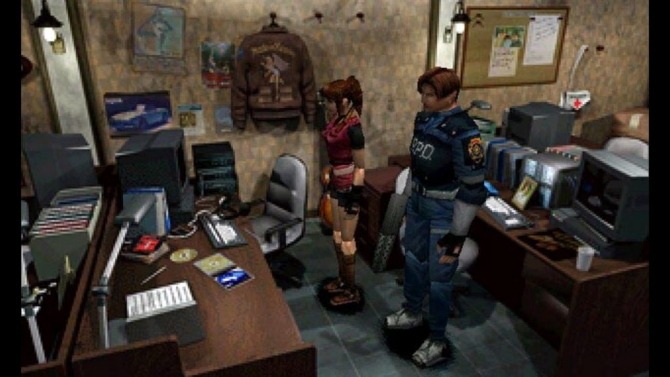
Such a move is practically unheard of in the world of sequels. Many sequels (even good-hearted sequels with positive intentions) are rushed out to try and capitalise on the previous product’s popularity by raking in some quick cash. Aliens is one of the greatest sequels of all-time (and eventually inspired parts of the Resident Evil 2 remake), but the pitch meeting for it consisted of James Cameron walking up to a chalkboard and writing “Alien$.” Dollar sign very much intended. With that in mind, the idea that a producer would take a sequel that is serviceable and ready to go and declare that it is not good enough, even though that same producer had previously intended for this to be the end of that series, is a very surprising notion indeed.
It’s really not that crazy when you think about it, though. Somewhere along the way, Mikami decided that he was going to be the one to determine what the expectations of a Resident Evil game were. After all, Mikami had treated Resident Evil like a passion project. The sequel could have gone in a different direction in the hands of another producer, but Mikami was not willing to ship a sequel that didn’t match his own expectations for what a Resident Evil game should be.
The second decision that shaped Resident Evil 2’s destiny was a corporate call that might make many fans and creators cringe. It came in the form of a directive from Capcom supervisor Yoshiki Okamoto, who said that the game’s story should “create a proper link between the two games” in order to open the possibility for future projects. It’s an order that many film fans (especially horror film fans) are no doubt all-too-familiar with. The “save something for the sequel” directive has ruined many projects that ultimately put the franchise cart before the plotline horse. They’re typically given by eager executives who see projected dollars and don’t understand that the great franchises typically begin with works that, in many ways, stand tall on their own.
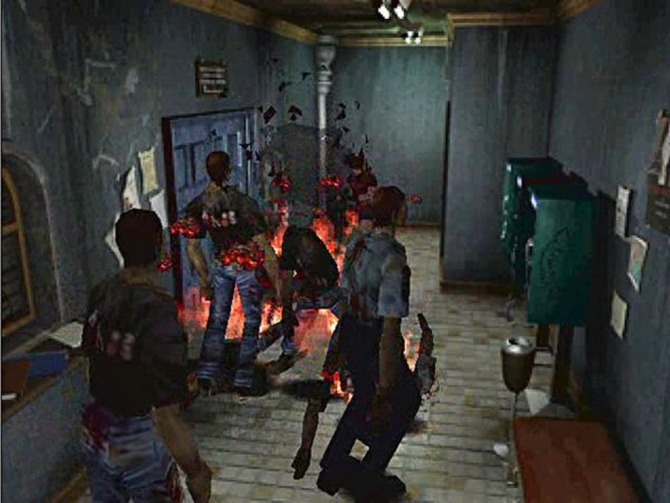
The reason why that decision didn’t ruin Resident Evil 2 is that Okamoto had no interest in deciding how the creators should do their jobs. Instead, he got in touch with an outside screenwriter named Noboru Sugimura who had some pretty fascinating idea about how things only hinted at in the first Resident Evil game could become the basis of a larger story. He then put Sugimura in contact with Mikami and Kamiya so that the three could work together to ensure their visions and standards not only matched but that their shared vision would be used as the core of the game’s rebooted development.
By doing so, Okamoto helped inspire one of Resident Evil 2’s defining qualities: the way it effectively builds a universe. The game doesn’t force-feed the larger Resident Evil universe on fans of the original game through exposition or long monologues. Instead, it finds ways to organically flesh out the universe through its characters and plot. In Resident Evil 2, we actually get to visit Racoon City, which was only mentioned in the original. One of the playable characters is Claire Redfield, the sister of Resident Evil protagonist Chris Redfield, while in the original build, the second character was a female drifter with no apparent ties to this world. The Umbrella Corporation is still active in the sequel, whereas the original version of the game would have suggested they shut down following the Spencer Mansion incident.
More important than the finer details of the universe is the fact that many of them, much like in the original game, really only exist in the periphery of the main plot. Resident Evil 2 never feels like a game that is in a hurry to get to the next chapter of its story. It instead allows the simple, intimate tale of two survivors in a damned city to gradually reveal the answers to questions you may not have even known you had. It made everything that happened in the first game seem more interesting and important while finding a voice of its own through the game’s improved presentation and greater cinematic quality.
There are your two momentous decisions, then: firstly, the bold move to bin the not-good-enough first version of Resident Evil; and then, the intriguing proposition of using this sequel to organically build the Resident Evil universe. With that brace of top-notch ideas, the stage was set for a new build of Resident Evil 2 that would deliver everything fans wanted.
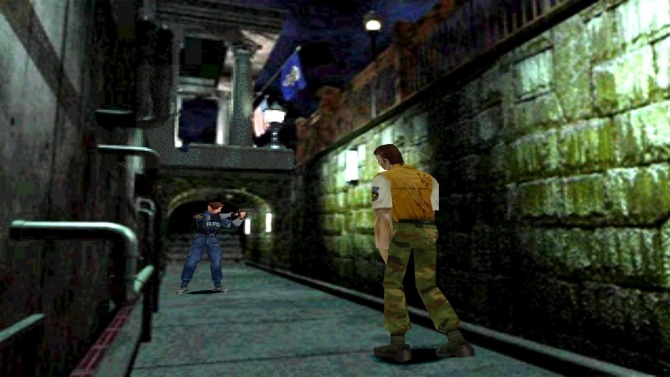
In terms of the game’s presentation, much of the credit there has to go to Resident Evil 2’s brilliant “Zapping System,” which allows players to experience four slightly altered versions of the game based on which character they choose to play as first. Certain events, item placements, and puzzles are slightly altered based on what the character you previously played as did during their adventure.
Inspired by the time-travelling story in Back to the Future Part II, this system not only gives players a reason to experience the game multiple times, but it is yet another way in which the writers and developers were able to slowly expand the game’s world. While there is now a generally agreed upon “correct” path through the game, at the time, fans amused themselves by discussing the implications of the various routes. Zapping made people excited about the idea of a Resident Evil universe because its compelling variations on individual stories suggested that there were many more to experience.
While elements like the zapping system were certainly ambitious, the somewhat uncomfortable truth is that Resident Evil 2 ultimately became a beloved sequel because it was made by people who accepted the inevitability of the sequel and everything that goes with it. Remember that the original build of Resident Evil 2 was also ambitious. It was arguably even more ambitious than the game we ultimately got. However, it was also a rough game that seemingly favoured ambition for difference’s sake over improving upon the original game that fans loved in the first place.
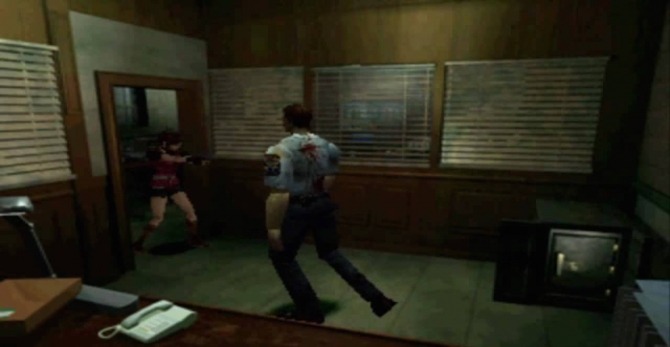
By comparison, Resident Evil 2 is one of the more polished sequels of its era and perhaps of all-time. Its voice acting was a tremendous improvement, its environments were beautiful and foreboding, characters and events felt like they had logical ties to the original game, there was a greater emphasis on action (but not so much action that it ruined the horror), and the game always found a way to provide that always important sequel quality of offering “more” to the player.
You could almost call it a predictable sequel, if it weren’t for the fact that those in charge were clearly living by the mantra that meeting fan expectations isn’t just about giving them more. It’s sometimes about challenging yourself to deliver something that is both familiar and undeniably new. By going into Raccoon City and adding such attention-grabbing new features as the zapping system, Resident Evil 2 does more than simply copying what came before. But it also does all the old stuff well, treading the line perfectly between classic concepts and new ideas.
It’s easy to admire an ambitious sequel that totally re-writes the book of the original and defies all expectations (such as we saw in Resident Evil 4). However, in a world where sequels are inevitable, respect must be given to a game like Resident Evil 2. It is the rare kind of follow-up that recreates the feeling of an original experience without replicating it. It builds on the original rather than boringly copying or drastically overhauling it, which makes Resident Evil 2 a perfect sequel. One of the best ever, even.

